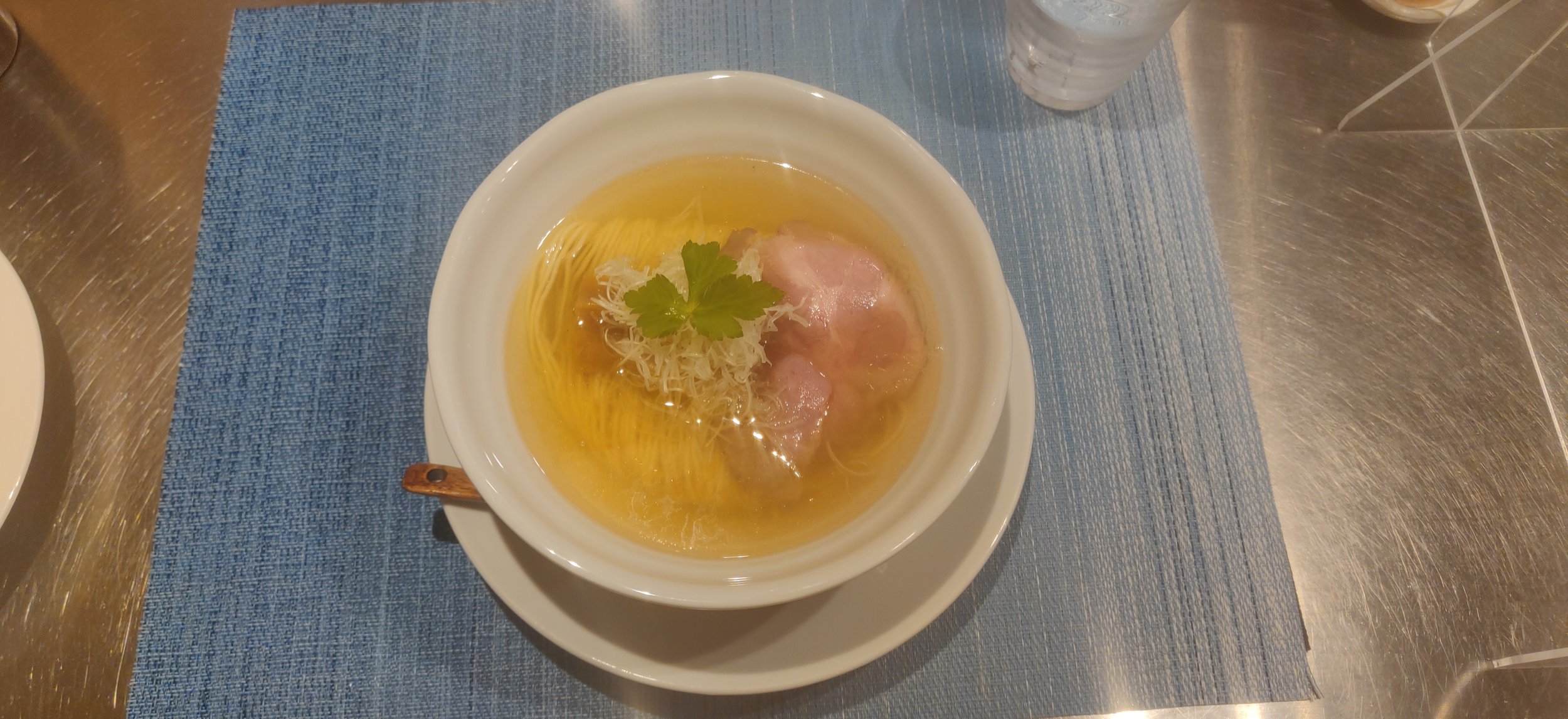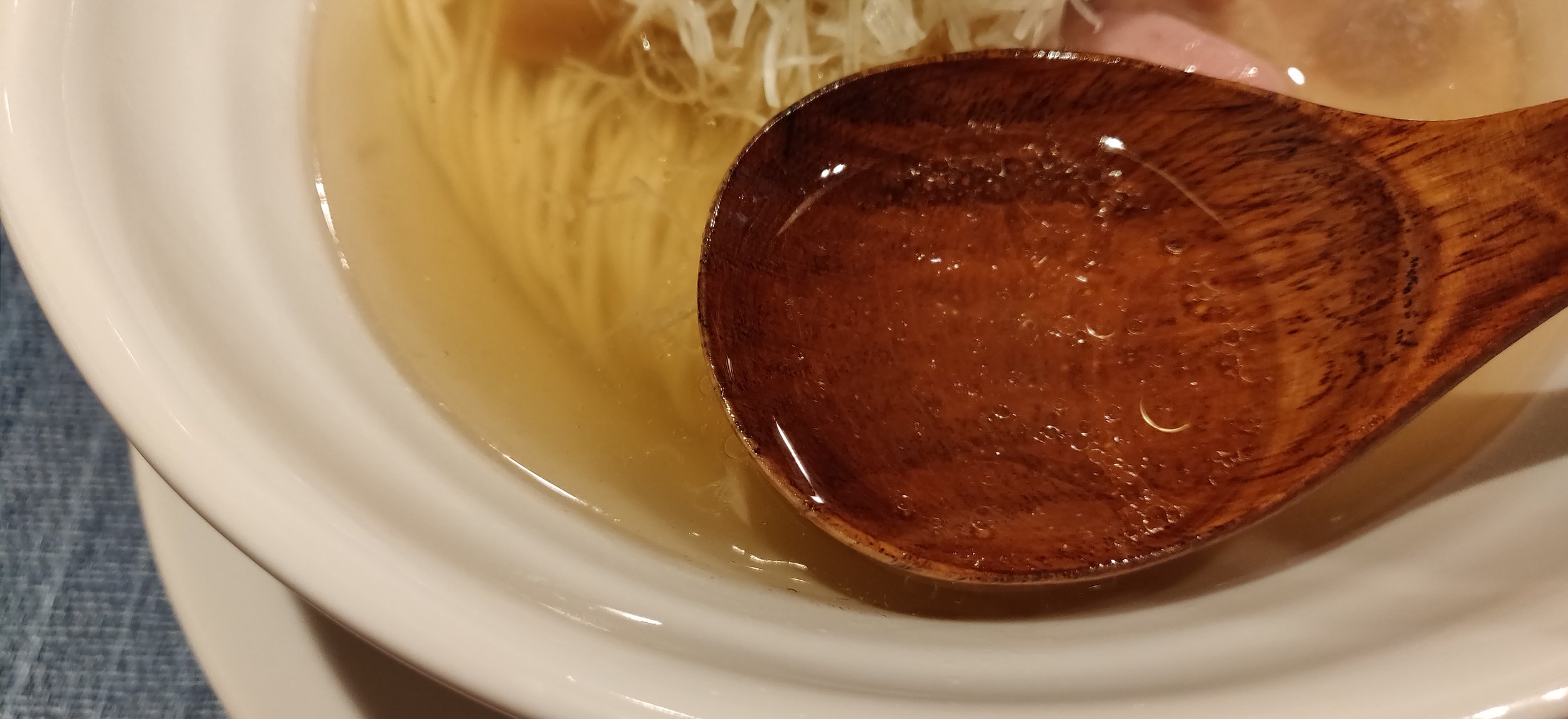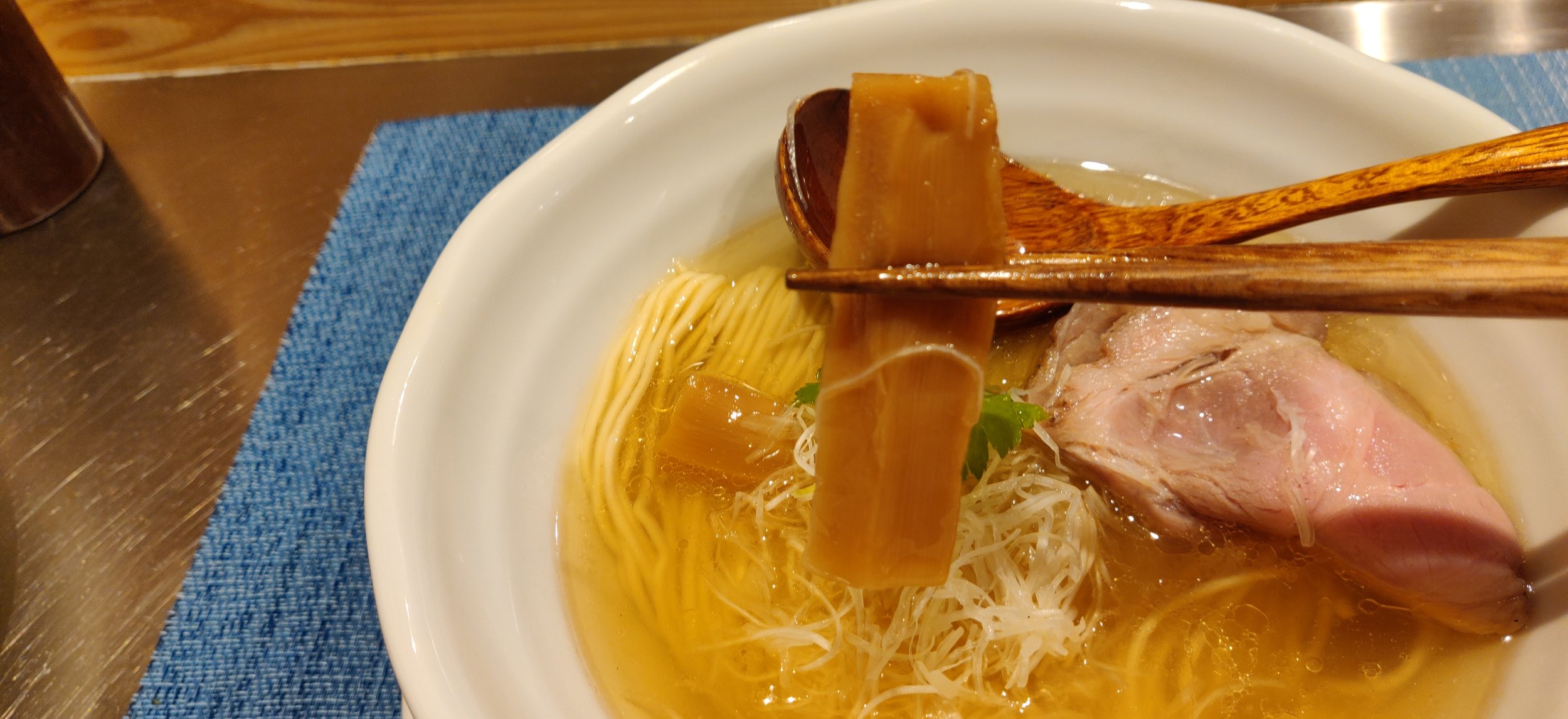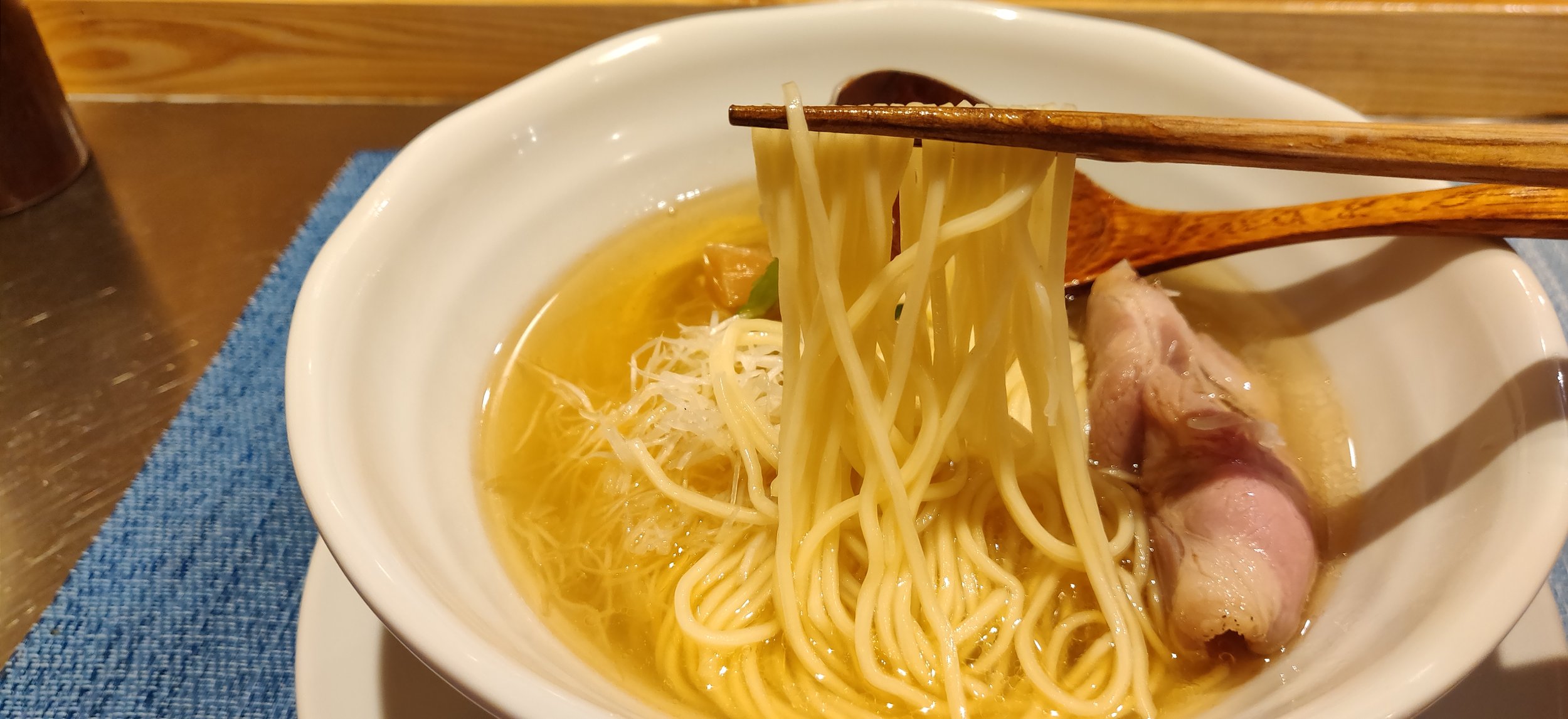Seijo Seika (成城青果): The Bib Gourmand/Tabelog Double; Roka Kouen, Tokyo
Back at it with a review for another double winner…double meaning a place in the two “prestigious” lists of the Michelin Guide and Tabelog’s Top 100 Ramen Hyakumeiten. Seijo Seika opened in June, 2020 near Roka Kouen station and has since garnered quite the buzz as they have been picking up accolades left and right. Renovating a former sake bar, the shop has a cool, but elegant atmosphere that has both ramen heads and gourmet aficionados flocking. Seijo Seika is open everyday from 11:00 to 15:00 for lunch and 17:00 to 23:00 for dinner. They do take sporadic days off which you can check via their twitter. If you end up making a visit make sure to go up to the front of the line as they have a unique queue in that it stops in front of the shop and continues down towards the station to not interfere with the other shops along the road. Ask the shop staff and they’ll guide you to where you need to queue.
Ticket machine is right to the left and as they don’t have a ton of foreign clientele, they opted not to translate their machine. Starting with the top row from the left is regular Shio Soba, medium Shio Soba, and large Shio Soba with a Shio Soba and pork over rice bowl set on the far right. Next row is the same as the first, but for Shoyu Soba and the third row is the pork over rice ala carte, ajitama egg topping, and extra pork chashu. Fourth row is their Tonkotsu Shoyu ramen in regular and medium sizes with drinks below of coke, oolong tea, whisky highball, and beer. Place your tickets up on the counter when you’re seated and takes about 10 minutes for your bowl to be ready.
Upon taking my seat and I get a feel of the shop interior, I can see why this was given the Michelin Bib Gourmand nod. It checks off all the boxes set forth by the Michelin ramen shops before them. Modern shop decor with eclectic art and designer light fixtures as well as proper table settings prepared before each seating. The service is immaculate with a number of support staff coming by to guide you in line, walk you to your seat, and refill your water whenever you run low. Seijo Seika runs more like a proper sit down restaurant than the typical mom and pop ramen shop just across the street. Order for the day was the Shio Ramen and Pork Chashu over Rice set for a surprising 1000 yen. Cost performance was on point as a combo like that would typicall run me 1200-1500 at a minimum in other ramen establishment.
Pictured above is the Shio Ramen. Taking a gentle stock from various dried fish and bushi fish shavings, the soup here at Seijo Seika is visually stunning and is crystal clear. Flavors are clean and pristine getting the right balance of umami and depth from the niboshi while ensuring that the bitterness, which is usually imparted from Niboshi, is kept at a minimum. I haven’t yet tried the shoyu, but I thought the shio here was a great choice as it keeps the crisp, clean flavors of the dried fish in tact and uplifts them for a very soothing tickle on the palette. Aroma oil is also infused with dried fish notes doubling down on the seafood flavor profile. Again, it is really gentle so if you’re looking for something with a huge punch, you’re not gonna get it here. However, if what you’re looking for is a heartwarming bowl, the soup here will definitely satisfy those cravings.
Noodles were very thin and to be expected with a soup as light as this one. You do get a rush of the wheat flour aroma when you sink your teeth in to them, but nothing to overpower the broth and works as a vessel really to get more soup in to your mouth. The beautiful fold help float the toppings on top which consists of some pork chashu, menma bamboo shoots, and thinly sliced negi. Not too surprised with the simplicity of it, I think it plays in to the theme of the bowl. What I do appreciate is that the price point reflects what you get as this could easily get 1000 yen on its own if it were served in central Tokyo. Made a mistake here letting the pork chashu sit while I devoured my soup and noodles. Residual heat of the soup warmed my chashu slice making a bit chewier than I would have liked. Definitely recommend eating it earlier than later because my first bite was far and away better than my last. Menma were the block cuts which I quite enjoy with shio ramen. The thinner hosaki menma is popular with shoyu ramen, but the block one pairs better with the shio in my opinions giving it a great texture contrast to the noodles as well. It has a defined shoyu based marinade flavor, but not so heavily seasoned that it muddles the soup. Finally the crisp thin sliced negi was a pleasant palette cleanse in between sips of the soup. You can order ajitama soft boiled eggs, but I decided against it on my visit.
Finally I finished my meal off with their pork chashu over rice bowl which was gorgeously plated. Honestly I can’t remember the last time I went to a ramen shop that took as much effort in to the plating of their side dish rice bowl as much as Seijo Seika, but I can guarantee it helped in them getting their Michelin Bib Gourmand nod. Pork chashu seems to be the same as the one in the ramen, but is dressed with a sweetened shoyu tare drizzled over the top. A generous spoonful of fried onions top the chashu over rice mound with drops of the sweet tare and wasabi placed on the rim. I’m one of those weird Japanese guys that love wasabi on their steak and this gave off the same vibe. I compare it to putting horseradish on meat, it has the same bite to it and gives a really refreshing twang that pairs beautifully with the pork chashu. For only 1000 yen, you’re doing your self a disservice if you don’t order this set meal. You definitely won’t regret it.
All in all, after making my visit here, I’ve got a pretty good idea of what the rater for the Michelin Guide looks for when giving the Bib Gourmand and Stars to ramen shops. Obviously needs a solid ramen, but the decor, ambiance, service all also need to be top tier to get any consideration. I personally think it is a bit of a BS system because it takes away from the old school vibe of how ramen originated, but that’s not to say that I don’t enjoy these shops as well. Just think the spectrum of shops to be considered should be wider as the culture of ramen casts a wide net and getting rid of subjective points of importance like decor takes away from the ramen itself. Anyways, if you end up making a visit to Seijo Seika, let me know on instagram of in the comments below and tell me what you thought of it!







